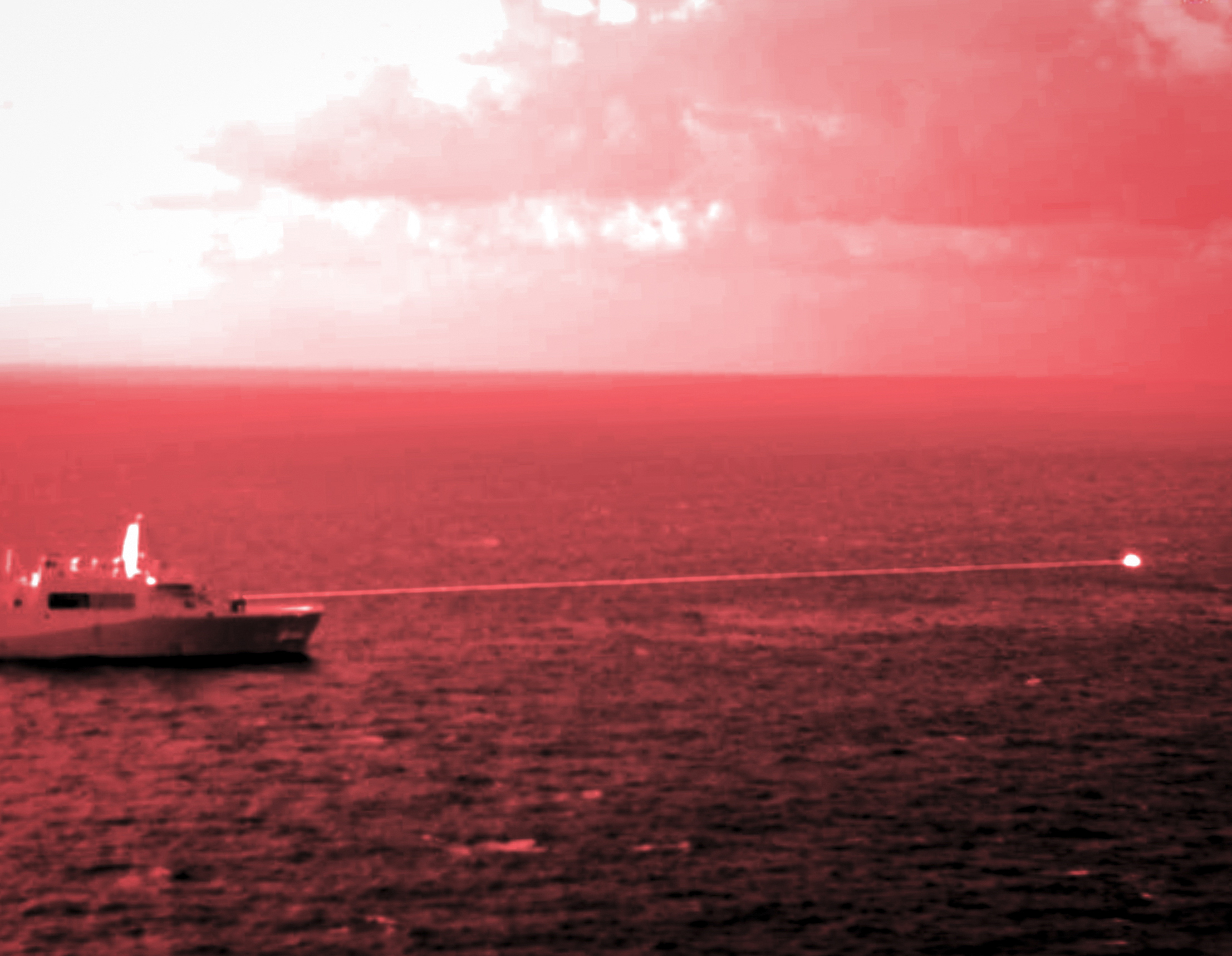
The U.S. Navy plans to mount a high-powered microwave prototype system on one of its vessels as early as 2026, according to the Navy’s Fiscal Year 2025 budget documents.
The system will come from the Navy’s Project METEOR, which is developing a directed energy weapon system prototype that the service plans to integrate on ships in 2026.
METEOR will “provide capability with low cost-per-shot, deep magazine, tactically significant range, short time engagement for multi-target approach, dual deception and defeat capability,” according to the budget documents.
This system will be the Navy’s first high-powered microwave, a type of directed energy weapon system that the Army, Navy and Air Force are exploring to counter cheap unmanned aerial systems.
Unlike other directed energy systems the Navy uses, the METEOR prototype will use a different kill mechanism to disable targets. Instead of a focused beam of light, HPM systems use microwave energy to inflict damage to electronics inside targets.
The Navy believes that this mechanism, which is unique to HPM systems, will be useful in defeating anti-ship ballistic missiles like the ones fielded by China’s People’s Liberation Army Rocket Force.
“Currently, the Joint Force suffers from a lack of redundant, resilient hard kill/soft kill options against stressing stream raid threats of Anti-Ship Ballistic Missiles (ASBM),” reads the FY 2025 budget documents.
“The issue is particularly acute in the [U.S. Indo-Pacific Command area of responsibility] due to the vast geographic distances involved, ship magazine size and adversary actions.”
The Navy has a similarly named, but separately-funded, HPM project also titled METEOR that is focused on accelerating technology development to address this ASBM issue in the Pacific.
The latter effort is getting funded as one of the Navy’s Rapid Defense Experimentation Reserve (RDER) projects. RDER is an initiative that Heidi Shyu, the undersecretary of defense for research and engineering, started in 2021. The goal is to select projects or programs that address capability gaps identified by the services or combatant commands and then accelerate their acquisition.
HPM systems will also have utility in other theaters, like the Red Sea and the Indian Ocean, where Houthis have fired hundreds of unmanned aerial systems and anti-ship cruise missiles at ships to disrupt global trade.
Next year, the Navy will conduct a series of functionality tests on various subsystems matured under past programs before integrating them into what it calls the High Power Microwave Test Bed.
During this period, the Navy will also start implementing design changes to the prototype hardware to prepare it for ship integration. This will include electromagnetic interference measurements, which are carried out to find a suitable topside location where the system won’t negatively interfere with the ship’s sensors or other systems.
Following the completion of these tests, the Navy will begin open-air testing of the prototype system against surrogate targets at the Point Mugu Sea Range.
Alongside METEOR, the Navy also plans to test a 300+ kW high-energy laser system developed under the High Energy Laser Counter ASCM Project known as HELCAP at the White Sands Missile Range next year.
This system will also undergo intercept tests against surrogate cruise missile targets.
However, unlike METEOR, the HELCAP is not scheduled to have prototypes that will get fielded on ships. The budget documents state that technology maturation efforts under HELCAP will inform follow increments to the Navy’s Surface Navy Laser Weapon System (SNLWS) Increment I (HELIOS).
Another type of directed energy weapon system is a laser. The Navy currently operates two different high-powered laser systems aboard its vessels.
The 150 kW Mk 2 Mod 0 laser weapon system demonstrator is fielded aboard the San Antonio-class transport dock ship USS Portland (LPD-27) and the 60 kW High Energy Laser with the Integrated Optical-Dazzler and Surveillance (HELIOS) system is on the USS Preble (DDG-88).
Eight more Arleigh-Burke class destroyers are equipped with the Optical Dazzler Interdictor Navy (ODIN), which is used for counter-intelligence, surveillance and reconnaissance against unmanned aerial systems.




